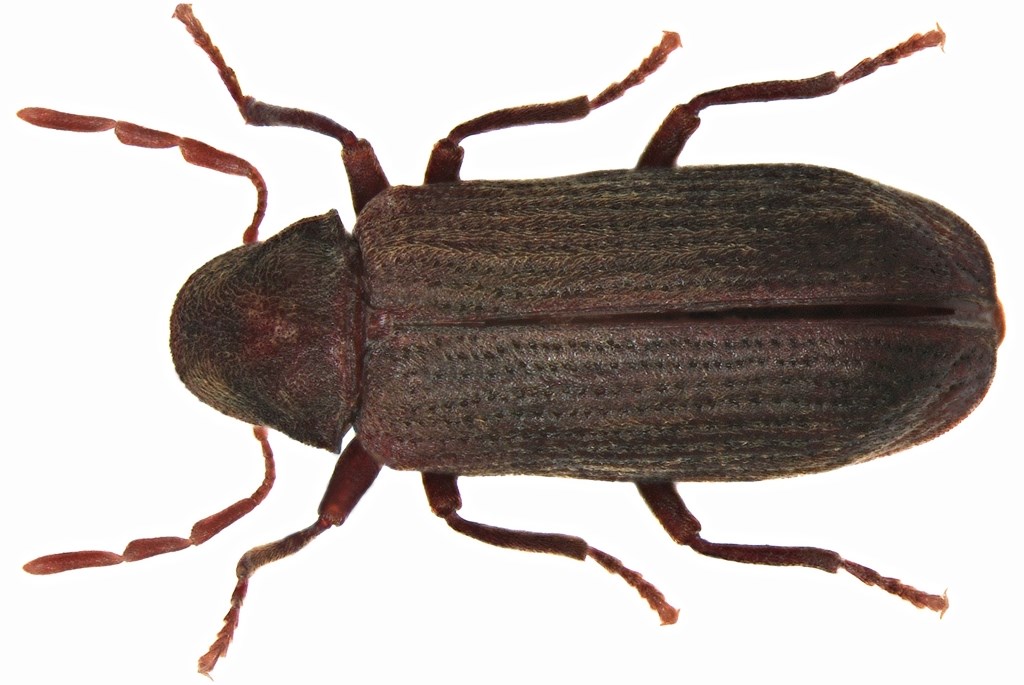Common furniture beetle, “deathwatch”
(Anobium punctatum)

Biology:
The adult common furniture beetle, the larvae of which are referred to as “woodworm”, is brown in colour and grows up to 4 mm long. The last 3 segments of its antennae are elongated. It is sometimes mistaken for the drugstore beetle, which is also a member of the woodworm beetles family, but it can be distinguished from this by the bump on its thorax and its single coat of hairs (the drugstore beetle has a double coat made up of flat-lying and protruding hairs). The term “deathwatch” refers to the performance that the beetles put on to attract sexual partners during the mating season. By hitting its head on the substrate, it makes a ticking sound.
The larvae are up to 7 mm long, bore into softwood and hardwood (mostly in sapwood) and eat or pupate in the circular tunnels. They hibernate as larvae in the wood.
Once they have emerged, the beetles, which are excellent flyers, then bore outside and leave the characteristic round exit holes with a diameter of 1 to 2 mm. When they create these exit holes, bore dust is forced out, making a woodworm infestation easy to identify. The beetle's development cycle lasts a total of 2 to 3 years and depends on the level of moisture in the wood. As a result, wood in humid rooms (room humidity > 55 %) or wood which is often wet cleaned can be severely infested.
Damage:
The common furniture beetle is an extremely harmful destroyer of all native types of softwood and hardwood, and can be found predominantly in furniture, wood carvings, wood cladding, floorboards, etc. The damage is caused by the larvae eating pathways on the inside of the wood and the adult beetles boring exit holes. The beetles themselves do not feed. As this wood pest requires a relatively high level of humidity, infestations are more common in rooms on the ground floor on in cellars than in the attic.
The beetle is occasionally mistaken for the drugstore beetle (Stegobium paniceum), which looks very similar but is a stored product pest. It is therefore essential that you enlist a specialist to determine the type of creature.
